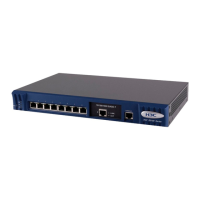Operation Manual – FTP-SFTP-TFTP
H3C S3100 Series Ethernet Switches Chapter 1 FTP and SFTP Configuration
1-1
Chapter 1 FTP and SFTP Configuration
1.1 Introduction to FTP and SFTP
1.1.1 Introduction to FTP
FTP (file transfer protocol) is commonly used in IP-based networks to transmit files.
Before World Wide Web comes into being, files are transferred through command lines,
and the most popular application is FTP. At present, although E-mail and Web are the
usual methods for file transmission, FTP still has its strongholds.
As an application layer protocol, FTP is used for file transfer between remote server
and local client. FTP uses TCP ports 20 and 21 for data transfer and control command
transfer respectively. Basic FTP operations are described in RFC 959.
FTP-based file transmission is performed in the following two modes:
z Binary mode for program file transfer
z ASCII mode for text file transfer
An H3C S3100 series Ethernet switch can act as an FTP client or the FTP server in
FTP-employed data transmission:
Table 1-1 Roles that an H3C S3100 series Ethernet switch acts as in FTP
Item Description Remarks
FTP server
An Ethernet switch can operate as an FTP
server to provide file transmission services
for FTP clients. You can log in to a switch
operating as an FTP server by running an
FTP client program on your PC to access
files on the FTP server.
FTP client
In this case, you need to establish a
connection between your PC and the switch
through a terminal emulation program or
Telnet, execute the ftp X.X.X.X command
on your PC. (X.X.X.X is the IP address of an
FTP server or a host name), and enter your
user name and password in turn. A switch
can operate as an FTP client, through
which you can access files on the FTP
server.
The prerequisite is
that a route exists
between the switch
and the PC.
1.1.2 Introduction to SFTP
Secure FTP (SFTP) is established based on an SSH2 connection. It allows a remote
user to log in to a switch to manage and transmit files, providing a securer guarantee for

